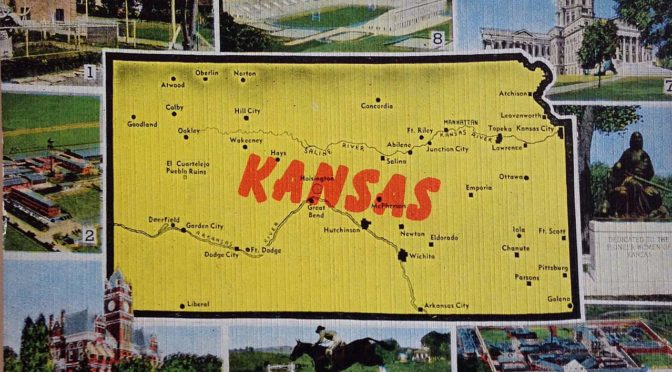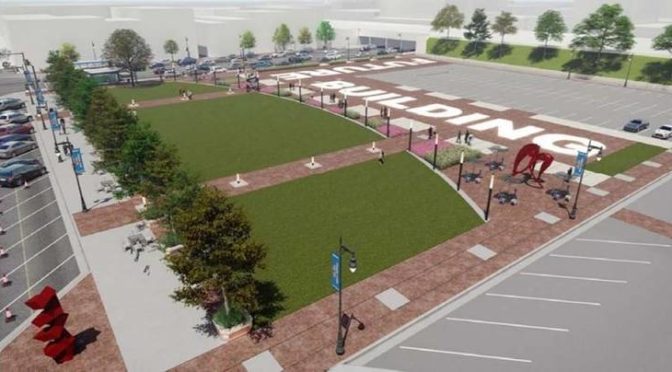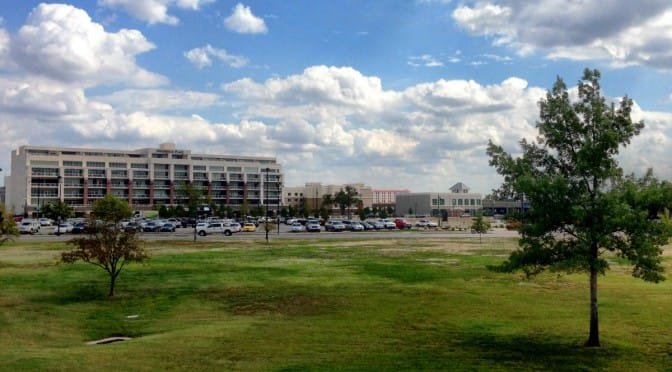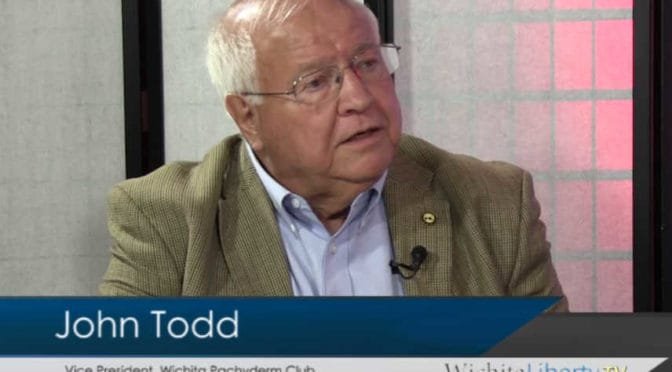Wichita city hall failed to uphold the terms of a development agreement from five years ago, not monitoring contracts that protect the public interest.
Two weeks ago a Wichita Eagle article reported on a 2002 public-private partnership that called for the private-sector company to submit an annual report to the city. But the company did not submit the reports, and the city didn’t ask for them. The city did after the Eagle inquired. 1
Much of the Eagle article described why current city officials were not aware of the 2002 agreement: “Due largely to turnover on the city staff and term limits on the City Council, top officials at City Hall were unaware of the contract provisions until The Eagle inquired about them. … No city official who played a major role in the 2002 contract is still actively involved in government.”
The article quoted Mayor Jeff Longwell as “interested in WaterWalk fulfilling any contractual agreement they have in place (with the city), even if that contract was made 20 years prior to my time.”
Now we know that the city did not enforce a similar agreement with the same WaterWalk developer made while Longwell was a council member. The city manager who oversaw the agreement is still manager.

I asked for the annual reports on July 10. Three days later I received a message indicating the documents would be ready on July 19. On that day they arrived. Like those provided to the Eagle, they were heavily redacted and showed that no additional rent was due the city.
Upon further inquiry, it is clear that these reports were not filed with the city on an annual basis, but were created only after I asked for them. 3
Calculations use incorrect formula
The 2012 agreement specified that the WaterWalk developer would be able to annually deduct 20 percent of the construction costs as “development cost return.” But, in the calculations provided to me by the city, 17 percent is used instead. 4

The city excused this error as being in favor of the city, and no additional rent was due in any case.
Redacted, not really
As shown in the examples above, the documents provided to me were heavily redacted, with nearly all numbers obscured. The illustrations show the appearance of the pdf document when opened in Acrobat reader or another pdf reader.
But a simple copy and paste into another application like Microsoft Word revealed the blacked-out numbers. The procedure used by the city didn’t really redact the numbers. It appears that someone used the Acrobat drawing tools to draw thick black lines over the numbers, which isn’t effective. Acrobat offers a set of redaction tools specifically designed for removing sensitive content from pdfs, and the city should have used this method. 5
When I reported this finding to the city, Elder replied: “We would ask that you respect the privacy of this information as well as the City’s obligations under the Kansas Open Records Act at K.S.A. 45-221(b), included below, which strictly prohibits the release of the financial information of a taxpayer, and not disclose the financial information.” 6
I don’t believe that the Kansas Open Records Act prohibits the disclosure of this information, and it is in the public interest that these numbers are available. At the moment, I am inclined to respect the city’s request.
Again
Here is another example of the city and its private-sector partners failing to observe a contract. The city did not monitor its agreements to protect the public interest, and this agreement is recent enough that remoteness in time is not an excuse.
Were the 2002 and 2012 development agreements wise for the city? At the time of the 2012 deal, I wrote this: 7
[There] is a provision that requires the apartment developer to pay “Additional Annual Rent.” Under this concept, each year the apartment developer will calculate “Adjusted Net Cash Flow” and remit 25 percent of that to the city.
To the casual observer, this seems like a magnanimous gesture by the apartment developer. It makes it look like the city has been a tough negotiator, hammering out a good deal for the city, letting citizens profit along with the apartment developer.
But the definition of cash flow includes a comprehensive list of expenses the may be deducted, including the cost of repaying any loans. There’s also an allowable expense called “Tenant Development Cost Return,” which is the apartment developer’s profit. The agreement defines this profit as 20 percent, and it’s deducted as part of the computation of “Adjusted Net Cash Flow.”
If there is ever any money left over after the dedication of all these expenses and profit margin, I will be surprised. Shocked, even. Here’s one reason why. One of the allowable deductions that goes into the computation of “Adjusted Net Cash Flow” is, according to city documents: “Amounts paid into any capital, furniture, fixture, equipment or other reserve.” There’s no restriction as to how much can be funneled into these reserve accounts. We can be sure that if this project was ever in the position where it looked like it might have to remit “Additional Annual Rent” to the city, contributions to these reserve funds would rise. Then, no funds paid to the city.
This is an example of the city appearing to be concerned for the welfare of taxpayers. In reality, this concept of “Additional Annual Rent” is worse than meaningless. It borders on deception.
Beyond this, we now know that neither the city nor the WaterWalk developer followed the terms of the deal. The annual reports were not supplied by the company, and they were not requested by the city. As it turns out the annual reports purport to show that the city was owed no money under the profit sharing agreement.
But that’s not the point. The issue is that the city did not enforce a simple aspect of the agreement, and the private-sector company felt it did not need to comply. Taxpayers were not protected, and we’re left wondering whether these agreements were really meant to be followed.
—
Notes
- Lefler, Dion. WaterWalk profit-sharing: 15 years, zero dollars for Wichita. Wichita Eagle, July 8, 2017. Available at http://www.kansas.com/news/politics-government/article160147944.html. ↩
- “As Additional Annual Rent Tenant shall pay a sum equal to twenty-five percent (25%) of the Adjusted Net Cash Flow commencing with the first day the Tenant Improvements open for business. The Tenant shall calculate Adjusted Net Cash Flow for each Current Year within forty-five (45) days after the end of the Current Year (or portion thereof) and provide that calculation, and pay to the Landlord the Additional Annual Rent, within sixty (60) days after the end of the Current Year. Additional Annual Rent shall continue until this Lease expires. Adjusted Net Cash Flow is Gross Revenues less Total Expenses, less the total amount of capital expenses for furniture, fixtures, and equipment for the Tenant Improvements in excess of the aggregate amount expended from any reserve during such year.” Amendments to WaterWalk Developer Agreements. August 21, 2012. Available at https://drive.google.com/file/d/0B97azj3TSm9Mdm1tWjlQbVAzemM/view?usp=sharing. ↩
- Email from city development analyst Mark Elder, July 21, 2017. “The annual report for this project was requested in the same time frame as the reports provided for Gander Mountain however, the documents were provided to the City within the last week.” ↩
- Wichita City Council agenda packet for August 21, 2012. Waterwalk Ground Lease, Section 16.08. “Tenant Development Cost Return, defined as, on an annual basis, twenty percent (20%) of the total Construction Costs for all Tenant Improvements paid by Tenant, Developer, or permitted assignees and sublessees. As further clarification, the amount determined to be twenty percent (20%) of the total Construction Costs for all Tenant Improvements may be included in the calculation of the Total Expenses each year during the Term of this Lease.” ↩
- Adobe.com. Removing sensitive content from PDFs. Available at https://helpx.adobe.com/acrobat/using/removing-sensitive-content-pdfs.html. ↩
- “Except to the extent disclosure is otherwise required by law or as appropriate during the course of an administrative proceeding or on appeal from agency action, a public agency or officer shall not disclose financial information of a taxpayer which may be required or requested by a county appraiser or the director of property valuation to assist in the determination of the value of the taxpayer’s property for ad valorem taxation purposes; or any financial information of a personal nature required or requested by a public agency or officer, including a name, job description or title revealing the salary or other compensation of officers, employees or applicants for employment with a firm, corporation or agency, except a public agency. Nothing contained herein shall be construed to prohibit the publication of statistics, so classified as to prevent identification of particular reports or returns and the items thereof.” ↩
- Weeks, Bob. Wichita WaterWalk apartment deal not good for citizens. https://wichitaliberty.org/wichita-government/wichita-waterwalk-apartment-deal-not-good-for-citizens/. ↩

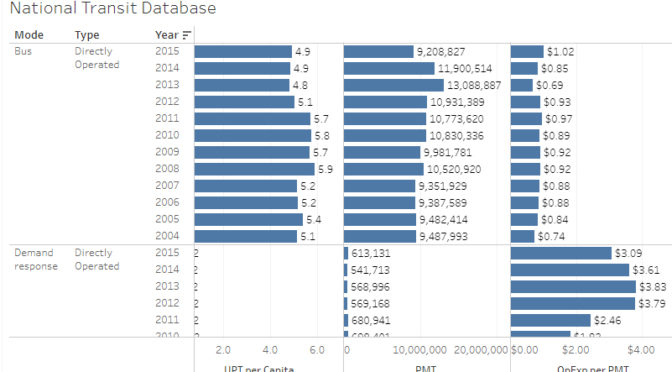






 In December 2014, in a look at the first five years of the arena, its manager
In December 2014, in a look at the first five years of the arena, its manager 
